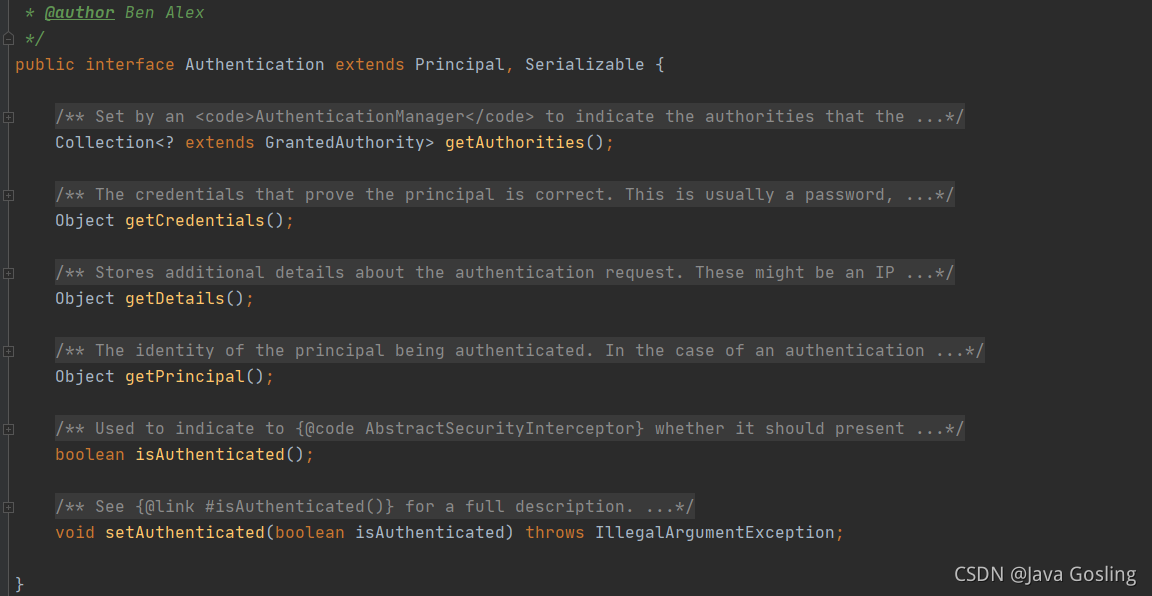之前在Spring Security流程分析的文章里提到过setDetails方法,也就是在WebAuthenticationDetails记录了IP和sessionId。
public WebAuthenticationDetails(HttpServletRequest request) {
this.remoteAddress = request.getRemoteAddr();
HttpSession session = request.getSession(false);
this.sessionId = (session != null) ? session.getId() : null;
}
我们知道,Spring Security 中的Authentication 保存了用户的信息,在Authentication 接口中定义了getDetails()方法,也就是说我们通过这个方法来拿到Details中的信息。

具体的获取如下:
Authentication authentication = SecurityContextHolder.getContext().getAuthentication();
WebAuthenticationDetails details = (WebAuthenticationDetails) authentication.getDetails();
但是这个details中只保存了remoteAddr 和 sessionId 的信息,我们可以自定义WebAuthenticationDetails,将想要的更多信息存储到details中。
首先创建MyWebAuthenticationDetails继承WebAuthenticationDetails,WebAuthenticationDetails提供了带有HttpServletRequest 参数的的构造方法,正合我们意,在构造方法里记录我们想要的值。
public class MyWebAuthenticationDetails extends WebAuthenticationDetails {
//定义参数
private String getAuthType;
private String getMethod;
....
public MyWebAuthenticationDetails(HttpServletRequest req) {
//TO DO
}
}
紧接着,仿照流程中的顺序,实现AuthenticationDetailsSource接口返回MyWebAuthenticationDetails 。
@Component
public class MyWebAuthenticationDetailsSource implements AuthenticationDetailsSource<HttpServletRequest,MyWebAuthenticationDetails> {
@Override
public MyWebAuthenticationDetails buildDetails(HttpServletRequest context) {
return new MyWebAuthenticationDetails(context);
}
}
最后在配置类替换下Spring Security系统默认提供的WebAuthenticationDetailsSource。
@Autowired
MyWebAuthenticationDetailsSource myWebAuthenticationDetailsSource;
@Override
protected void configure(HttpSecurity http) throws Exception {
http.authorizeRequests()
.anyRequest().authenticated()
.and()
.formLogin()
.authenticationDetailsSource(myWebAuthenticationDetailsSource)
.and()
...
}
使用方法和之前的一样,只是强转下类型就行。
Authentication authentication = SecurityContextHolder.getContext().getAuthentication();
MyWebAuthenticationDetails details = (MyWebAuthenticationDetails) authentication.getDetails();